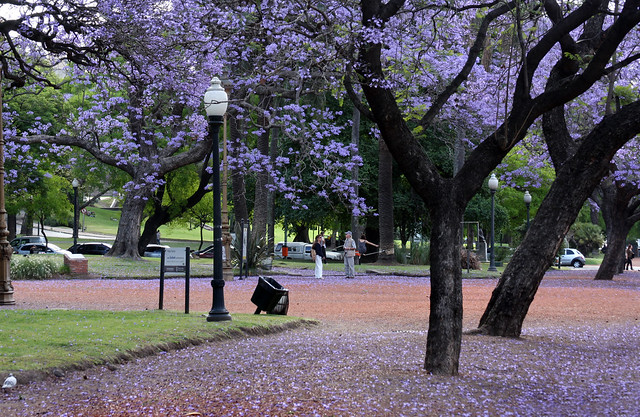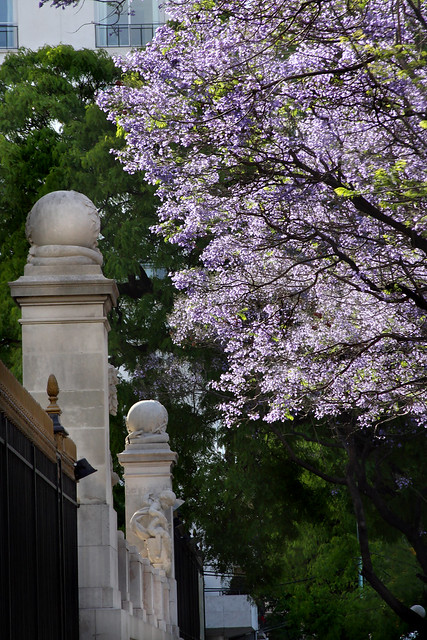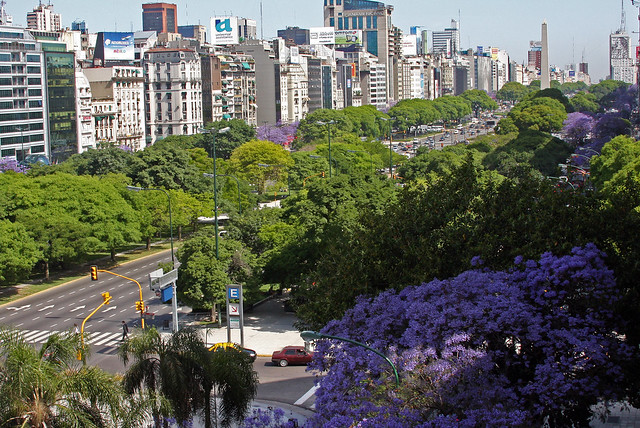Sweet mouthfuls from my Córdoba
(si prefieres leer este post en español, por favor, sigue este enlace)
 |
| A batch of my alfajores cordobeses filled with cherry jam |
Here's some advice for you: if a colleague from work, a neighbour, your cousin, your best friend or even
a certain blogger contact of yours tells you that he or she is heading for Córdoba -mostly the one in Argentina, but as you will see, it can also be the one in Spain- and he or she asks what you want as a souvenir from this
exotic and far away land, make sure you remember this word and learn how to say it properly, "alfajores!" You will thank me if you do. Here is why:
What is an alfajor?
An alfajor is basically a pastry made by joining two layers of cake or biscuits with some
dulce de leche, mousse or fruit jam in the middle. Depending on where they come from,
alfajores can be made in different ways, filled with different kinds of jams and either coated in white or dark chocolate, in a sugar glaze or simply covered with a dust of powdered sugar. Take your pick, they are the sweetest mouthfuls you can ask for and they are very popular all over Argentina.
 |
| Alfajores de maicena by "The Baker's Dozen", a small business owned by a friend in Córdoba. |
Where does the alfajor come from?
The
alfajor (pronounced more or less
alfa-HOR, plural is
alfajores -
alfa-HO-res) entered Spain in the times of the
al-Andalus, when the whole of Spain was occupied by the Moors (from 711 to 1492 to be precise). Moorish influence in Spanish culture is still going strong to this day and it is to the Moors that we have to thank for this beautiful pastry.
 |
| Interior of the impressive mosque in the city of Córdoba (Spain) - remains of the glory of the al-Andalus. |
It was mostly in the convents all over Spain (and therefore probably in those of the
old Córdoba, the one in Andalusia) where nuns kept alive many of the brilliant recipes that the Moors had introduced in Spain; and in time, it was through Spain that the tradition of the
alfajor was taken to the other side of the Atlantic to the South American colonies, where the recipes changed, due to the lack of ingredients or to new habits, but where they became a favourite type of pastry across the continent.
The alfajor in Argentina:
It was also in Córdoba, but this time the new one in Argentina, where the alfajor started to be produced at an industrial scale. Back in the 1860s, Augusto Chammás, a French chemist who had settled in the mediterranean city, started a small family factory to produce what we today know as the typical
alfajor cordobés.
Alfajores Chammás are, in my humble opinion, still the best that you can get in Córdoba. (wink, wink ... remember this for the operation "souvenir
cordobés"!)
Nowadays there are lots of different brands and factories that come up with their special type of
alfajor - all or most of them
ricos (tasty). Every tourist centre in the country has its own type or brand, and if you are on holidays in the hills of Córdoba, in Bariloche, or in Mar del Plata, you simply can't go back home without taking a couple of dozens for your family or friends.
The best: the alfajor cordobés
 |
| A batch of the alfajores filled with dulce the leche that I prepared recently. |
Now, I wouldn't be a true Argie if I didn't claim that our
alfajores from Córdoba are the best, would I? But the truth be told, I prefer
alfajores that taste as
artesanales (handmade) and are light and fluffy rather than creamy or chocolatey such as those you buy in any
kiosco or supermarket in Argentina.
The classic
alfajor cordobés is made with two layers of a crumbly, airy pastry hugging, so to speak, the fruit jam or
dulce de leche in between. The most comon fruit jams used to fill them are quince, fig or apricot. The sandwich biscuits are either covered in a dusting of icing sugar or coated in an egg white glaze.
The Challenge:
Once again, my blogger friend
Katie from
Seashells and Sunflowers came up with a challenge for bloggers in / from Argentina and this time it was a sweet one: each one of the participant bloggers had to make her own regional version of
alfajores.
On this occasion, the participants are (besides myself, of course):
Katie, from blog
Seashells and Sunflowers
Ana, from blog
Ana's Travels
Meag, from blog
A Domestic Disturbance
Rebecca, from blog
From Argentina, with Love
Paula, from blog
Buenos Aires Foodies
Please visit Katie's, Ana's, Meag's, Rebecca's and Paula's blogs to find the other recipes for more
Alfajor Heaven!
Now, if you are not so lucky as to have a work colleague, neighbour, cousin, best friend or even
a certain blogger contact kind enough to bring you
Chammás alfajores from Córdoba, you can always try to make your own. Here is...
the recipe for alfajores cordobeses:
Ingredients: (this recipe made me 20 alfajores, cutting the biscuits of the size of an espresso cup)
200 grams of icing sugar
6 egg yokes
50 grams of butter, melted
the zest of 1 lemon
150 grams of plain flour
1 teaspoon of baking powder
dulce de leche or fruit jam to fill the biscuits
For the glazing:
3 spoons of icing sugar
1 egg white
100 grams of caster sugar
75 cc. of water
the juice of half a lemon
Preparation:

- Beat the icing sugar and the egg yokes until the mixture is foamy. You can do this au bain marie (placing the bowl with the mixture on top of pan with warm -not too hot- water).
- Add the melted butter, the plain flour, the baking powder and the lemon zest, then mix until you get a soft dough. If necessary, add some more plain flour until you see that you can lift the dough easily from the bowl. Shape the dough into two balls and place in the fridge to cool for at least 20 minutes.
- Preheat the oven to 160/170°C. On a floured work surface work the dough until you get a thickness of about 1/2 cm. Cut the dough into 4 cm circles using a pasta cutter or the rim of a small glass or cup.
- Place the biscuits obtained on an oven plaque lined with baking paper and take to the oven.
- Bake for about 10 to 12 minutes until done (dry but not brown), take them out and let them cool.
- Take one biscuit and spread some dulce de leche or the fruit jam of your choice on it, then top it with another biscuit. Repeat the process until you have used all the biscuits.
The glazing:
- Beat the egg whites and the icing sugar for about 10 minutes you obtain a thick cream.
- Prepare a syrup with 100 grams of caster sugar and the water (do not add much, just enough to more or less cover the amount of sugar) and put it on the gas until the sugar dissolves.
- Add the syrup to the egg white mix and coat the alfajores immediately.
- Let the glazing dry before serving or storing the alfajores.
 |
| The final result: my alfajores cordobeses with a white sugar and egg white coating. |
A sneak preview of the other girls' alfajores for this challenge:
(you can click on the link below the photo to go to the recipes)
----------
Thanks to my friend Claudia from
"The Baker's Dozen" (Córdoba, Argentina) for letting me use her picture of the delicious alfajores de maicena.
Please, visit
The Baker's Dozen Facebook page for information on their chocolaterie/patisserie and confectionery products for birthday parties and events in the city of Córdoba.Questions and orders can be sent to consultasbaker [at] hotmail [dot] com or call (54 351) 424 8715.
















































































